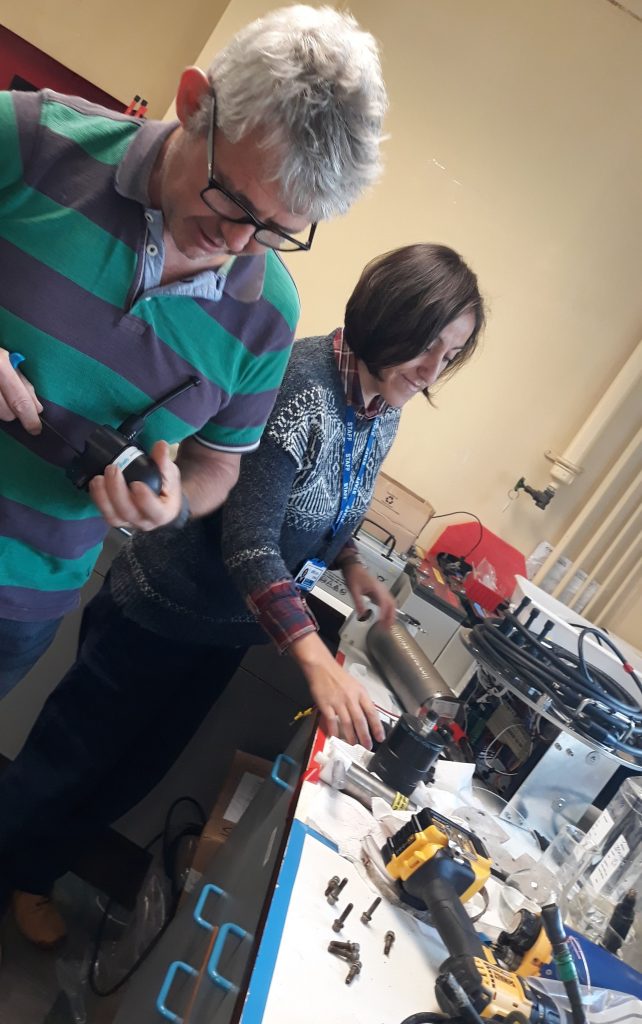COMPASS network gets high-tech upgrades
The main aim of the COMPASS project is to deliver the first fully coherent network of monitoring buoys across our regional seas. To do this, we are already using existing and emerging technologies. However, innovation approaches are required on COMPASS to ensure there is integration of this equipment. You can see this in the development of a new integrated buoy designed to specifically meet the needs of the project.

The design and development of our new buoy is being undertaken by AFBI, in conjunction with the Marine Institute (Galway). This work requires a number of sensors to be integrated into a custom built monitoring buoy. Cecilica Zambrano, Oceanographic Technical Officer, who is involved in the development of the buoy, explains:

“Since we would like to integrate innovative measurement techniques into the development of the Network of Buoys, we need to customise the design to our specific application. However, because the buoy is not an off-the-shelf product we need to start from scratch, which is quite challenging.”
Different aspects need to be considered when building the buoy; size, stability. we also need to ensure systems are in place to allow data to flow from the buoy to the scientist.
Power supply plays an important role as instruments on board must run continuously. We have installed solar panels to cover some of the power consumption. This will make it independent, especially when the buoy is deployed for long periods in the Irish Sea.
Adam Mellor, Project Lead on the COMPASS project explains, “Our task is to come up with an efficient solution taking into consideration all these aspects of building a buoy. I think the work is important because the results of the project will be used to evaluate the impact of the climate change on the Irish Sea and influence future management of the marine environment.”
